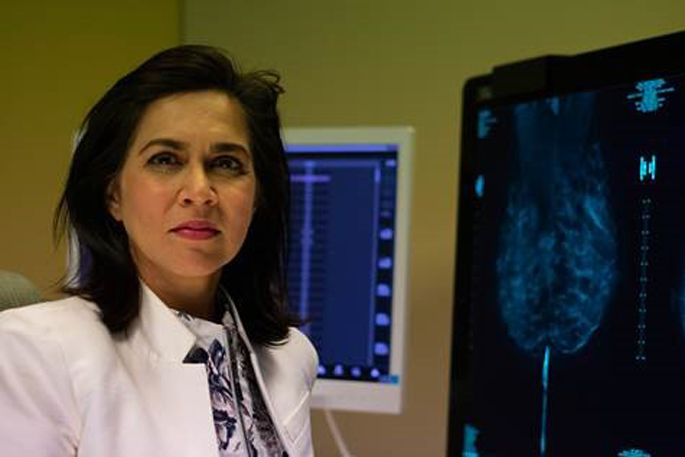A Bay of Plenty woman is supporting a new study aiming to improve the screening process for women who are at higher risk of breast cancer.
Ōpōtiki woman Nikki Slade Robinson was diagnosed with breast cancer early last year after discovering a lump, which the mammogram she'd had in late 2018 had missed.
She later learnt she had dense breasts and now wonders if she knew this earlier, she might've had a different outcome.
The study will investigate the link between dense breasts and interval cancers – the often dangerous breast cancers that appear during the time between mammograms. Her work will be funded by a grant from Breast Cancer Foundation NZ.
The charity has awarded Dr Monica Saini, New Zealand's leading voice on the issue of breast density, $75,000 for her one-year study, the first of its kind here. Her team will look into whether having dense breast tissue means a woman is more likely to develop an interval cancer, factoring in ethnicity, age and family history.
Monica says, 'The ultimate goal of this study is to prevent interval cancers from happening. By understanding how breast density and other risk factors relate to interval cancers, we can improve screening in order to catch cancer earlier and reduce deaths.
'This research will help us to figure out how to screen the right women, at the right time, with the right tests.”
 Dr Monica Saini. Supplied image.
Dr Monica Saini. Supplied image.
In New Zealand, nearly a third of tumours detected in women of screening age, 45-69, are interval cancers. Interval cancers are often larger and more dangerous than screen-detected cancers. The 10-year survival rate for breast cancer detected by a mammogram is 92 per cent, compared to 75 per cent if a lump is the first sign.
Breast density is associated with an increased risk of developing breast cancer, and also makes it harder to detect cancer on a mammogram. Having dense breasts is quite common, but currently information about breast density is not collected during mammograms in the public system, women are not told if they have dense breasts and there are no clear guidelines on the best approach to monitoring these women. Additionally, a NZ pilot study found that Māori women had a higher level of density than non-Māori.
Chief executive of BCFNZ Evangelia Henderson says, 'Dr Saini has identified a huge and important gap in our knowledge about breast density and interval cancers in NZ women. We need to know which women are more likely to develop interval cancers, so we can improve our screening programme.
'Early detection is the best defence against breast cancer, and our hope is that Monica's study will take us one step closer towards zero deaths from breast cancer becoming a reality.”
The study will involve looking at roughly 200 cases of women aged 45-69 in the greater Wellington region who were diagnosed with an interval cancer between January 2014 and December 2020, compared to a control group of around 200 women who were screened at the same time and didn't develop cancer.
Previous research has shown additional screening tests such as ultrasounds and MRIs for women with increased breast density can improve cancer detection rates.
Each year more than 3,300 women are diagnosed with breast cancer in New Zealand, and more than 650 will die. BCFNZ is New Zealand's largest funder of breast cancer research, working towards a vision of zero deaths from breast cancer.



0 comments
Leave a Comment
You must be logged in to make a comment.